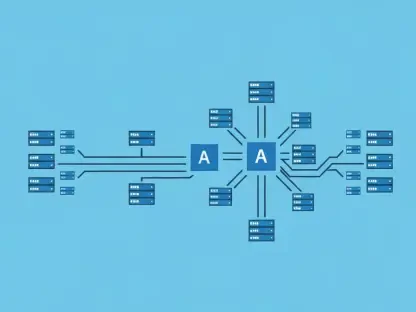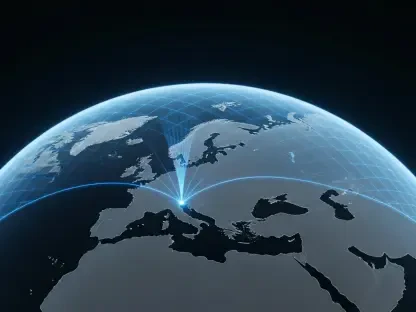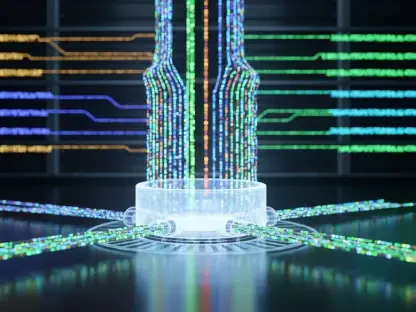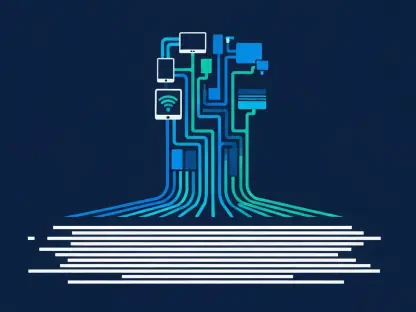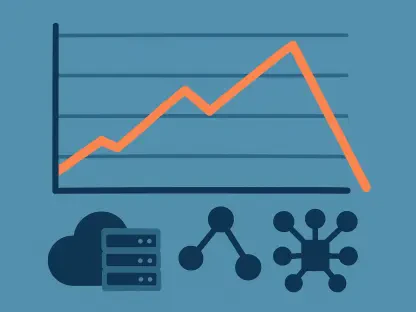Imagine a world where websites are crafted in half the time, with code so efficient that energy consumption drops significantly, yet the very tools enabling this progress consume vast amounts of electricity and water, rivaling entire industries in their environmental impact. This paradox lies at the heart of artificial intelligence (AI) integration into web design, a field increasingly reliant on cutting-edge technology to enhance user experience and streamline workflows. The tension between AI’s potential for sustainability and its substantial ecological footprint raises critical questions for designers, developers, and businesses aiming to balance innovation with responsibility.
The purpose of this FAQ article is to address the most pressing inquiries surrounding AI’s role in web design, focusing on how it can promote sustainable practices while also posing significant environmental challenges. Readers will find clear, detailed answers that explore both the advantages and drawbacks, offering insights into practical strategies for mitigating negative impacts. By delving into this complex topic, the content aims to equip stakeholders with the knowledge needed to make informed decisions in an era where technology and sustainability must coexist.
This discussion will cover key areas such as efficiency gains from AI tools, the hidden costs of AI infrastructure, transparency issues in environmental reporting, and actionable steps for sustainable implementation. Expect a comprehensive look at how AI reshapes web design, with evidence-backed explanations and real-world examples to illuminate the dual nature of this technological advancement. Whether you’re a designer or a business leader, the information provided will help navigate the intricate landscape of AI-driven web development.
Key Questions or Key Topics
How Does AI Enhance Sustainability in Web Design?
AI has emerged as a transformative force in web design by automating repetitive tasks and optimizing processes, thereby reducing the time and energy required for project completion. Tools powered by AI can generate responsive layouts, refine code, and compress images automatically, allowing developers to focus on creative problem-solving rather than manual labor. This efficiency translates into shorter project timelines, which can lower the overall energy footprint of development cycles.
Beyond time savings, AI contributes to sustainability by improving the performance of websites at the page level. For instance, algorithms can identify and remove redundant code or unused selectors, resulting in faster-loading pages that demand less server power. Additionally, AI-driven personalization ensures users receive only relevant content, minimizing unnecessary data transfers and further conserving energy, a critical factor in reducing digital carbon footprints.
Specific examples highlight these benefits, such as AI optimization of image formats like AVIF, which reduce file sizes without compromising quality, or intelligent caching systems that cut server requests by significant margins. These advancements suggest that AI can play a pivotal role in creating leaner, more energy-efficient web experiences, aligning with broader goals of sustainable digital practices when applied thoughtfully.
What Are the Environmental Costs of AI in Web Design?
While AI offers efficiency gains, the infrastructure supporting these tools imposes a heavy environmental burden that cannot be overlooked. Data centers powering AI operations consume a substantial share of global electricity, with projections indicating a sharp rise in demand over the coming years. Training large AI models emits carbon equivalent to extensive air travel, and daily operations like image generation can match these emissions over time.
Another often-overlooked cost is water usage, as data centers rely on cooling systems that can deplete millions of gallons annually, especially in regions already facing scarcity. A single AI query might use a notable amount of water, and with widespread adoption, this could escalate to billions of liters by 2027. Such resource demands highlight the hidden toll of AI tools, even those used for seemingly small tasks in web design.
Hardware lifecycle impacts add another layer of concern, with high-performance AI components becoming obsolete quickly, contributing to electronic waste. The mining of materials for these devices often occurs under unsustainable conditions, and improper disposal risks releasing toxic substances into the environment. These factors collectively underscore that AI’s environmental costs may offset sustainability gains if not addressed strategically.
Why Is Transparency a Challenge in Assessing AI’s Ecological Impact?
A significant barrier to understanding AI’s full environmental impact in web design lies in the lack of clear, consistent reporting from corporations. Data on energy and water consumption for AI-specific workloads is frequently bundled with general data center statistics, making it difficult to isolate the precise footprint of AI tools. This opacity prevents designers and businesses from fully grasping the consequences of their technology choices.
Discrepancies in reported figures further complicate the issue, with some studies suggesting that actual emissions from data centers could be drastically higher than disclosed due to inconsistent metrics. Without standardized, transparent reporting, stakeholders lack the data needed to weigh AI’s benefits against its costs accurately. This gap in accountability hinders efforts to adopt more sustainable practices in the industry.
The absence of detailed environmental impact information also affects decision-making at the individual and organizational levels. When the true scale of AI’s resource use remains unclear, it becomes challenging to prioritize eco-friendly tools or advocate for systemic change. Addressing this transparency gap is essential for fostering trust and enabling informed strategies in web design.
Does AI’s Net Impact on Sustainability Lean Positive or Negative?
The debate over AI’s net impact on sustainability in web design remains unresolved, with compelling arguments on both sides. Proponents highlight that AI’s current energy consumption represents a small fraction of global use and argue that its broader applications, like optimizing energy grids, could yield significant emission reductions. Some major tech companies have reported substantial environmental benefits from AI-driven solutions in recent years.
Conversely, critical research paints a less optimistic picture, noting that data centers already account for a notable percentage of electricity use in key regions, with AI workloads driving much of this demand. Studies indicate that the carbon intensity of this electricity often exceeds average levels, suggesting an underestimated environmental cost. Projections warn of escalating power needs in the near future, raising doubts about long-term sustainability.
Balancing these perspectives requires acknowledging that while AI offers tangible page-level efficiencies in web design, the macro-level costs of infrastructure could overshadow these gains without intervention. The net impact hinges on how the industry evolves, whether through innovation in energy efficiency or stricter regulations to curb resource overuse. This ongoing debate underscores the complexity of integrating AI sustainably.
What Strategies Can Minimize AI’s Environmental Impact in Web Design?
Given AI’s inevitable role in web design, with many businesses planning to increase investments, adopting strategies to reduce its ecological footprint is crucial. Starting with a foundation of sustainable web principles, such as using minimal JavaScript and system fonts, helps ensure that websites remain lightweight and energy-efficient. These practices set the stage for responsible AI integration.
Selecting AI vendors committed to renewable energy and transparent environmental reporting is another vital step. Additionally, optimizing AI usage through techniques like batch processing or concise input prompts can cut down on unnecessary energy waste during operations. Combining these efforts with green hosting solutions and efficient content delivery networks further reduces the environmental load.
Advocacy for industry-wide sustainability standards also plays a key role, as collective action can push for better practices and accountability. Designers and businesses are encouraged to champion stricter emissions reporting and share thought leadership on sustainable AI use. Together, these measures offer a practical framework for leveraging AI’s benefits while mitigating its substantial costs to the planet.
Summary or Recap
This FAQ article addresses the dual nature of AI in web design, highlighting its capacity to drive sustainability through efficiency while posing significant environmental challenges. Key points include AI’s ability to automate tasks, optimize code, and enhance user experiences, all of which contribute to reduced energy use at the website level. However, these gains are contrasted by the high electricity and water demands of AI infrastructure, alongside growing electronic waste concerns.
The discussion also emphasizes the critical issue of transparency, as inconsistent reporting obscures the true ecological impact of AI tools, complicating decision-making for stakeholders. The net impact of AI remains a debated topic, with industry optimism clashing against research warnings of escalating resource demands. Strategies such as sustainable design principles, careful vendor selection, and advocacy for accountability provide actionable paths forward.
For those seeking deeper exploration, resources on sustainable web design practices and reports from environmental agencies tracking data center impacts are recommended. Engaging with communities focused on green technology can also offer valuable insights. These takeaways equip readers to navigate AI’s role in web design with a balanced, informed perspective.
Conclusion or Final Thoughts
Looking back, the exploration of AI in web design revealed a landscape marked by both promise and peril, where efficiency gains wrestled with environmental burdens. The insights shared underscored that while automation and optimization reshaped development for the better, the resource-intensive nature of AI infrastructure demanded urgent attention. Each question tackled shed light on the delicate balance that had to be struck to harness technology responsibly.
Moving forward, stakeholders should prioritize integrating sustainable practices into every stage of web design, from choosing energy-efficient tools to advocating for transparent industry standards. Exploring partnerships with vendors committed to renewable energy sources emerged as a tangible next step, alongside investing in training to optimize AI usage for minimal waste. These actions could pave the way for a future where innovation and environmental stewardship aligned more closely.
Reflecting on this topic, it’s worth considering how individual choices in adopting AI tools might ripple out to influence broader industry trends. Could a commitment to sustainability in personal or organizational projects inspire wider change? Contemplating this intersection of technology and responsibility offers a chance to contribute to a more balanced digital ecosystem.




